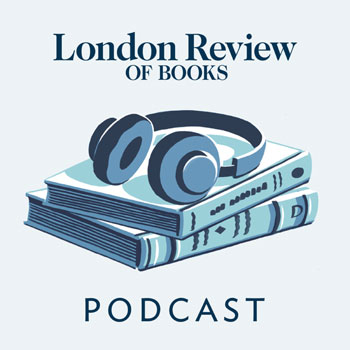
“Any organisation should use audience and data to make their decisions, but a marketer has that engrained in their soul,” Reneé Doegar observes. “Because of where I’ve come from, I’ll never stop loving both of these approaches to business and my love of testing, born in marketing, will never die.”
Doegar hopes all three will now shape how LRB evolves. And to ensure this, pulling together all LRB’s data sources is now a central pillar of its new publishing strategy.
“It’s about really looking at how our customers move through the LRB brand and tailoring our content messaging more around that,” she explains. “It’s about bringing data, and user research, and testing into the culture more widely because until now, these things have only been in certain areas of the business.”
To use audience and data insight to better understand how its platforms run and, in turn, to really grow the businesses is, she says, the big opportunity.
New management team
Doegar, formerly LRB’s commercial director, was promoted to publisher last autumn following the retirement of LRB’s longstanding publisher, Nicholas Spice. And she’s been busy juggling external and internal priorities over the six months since.

On the one hand, there have been issues with printing and distributing the print edition (caused by paper shortages and problems with the postal system in America), the ongoing pandemic, and the cost of running the business.
On the other, there’s been supporting LRB’s staff through the ongoing pandemic, building a new executive team, and working out with editors Jean McNicol and Alice Spawls – who took over from their longstanding predecessor, co-founder and editor Mary-Kay Wilmers, in January 2021 – where the business should now go.
“Working together with our editors, who have such an understanding of our brand and content, to try to develop new things with a really data driven approach is what I really hope to achieve,” Doegar says.
And the good news is that many of the systems and procedures needed to do this are already in place.
“Over the past few years, LRB has invested a lot in digital and technology, audio-visual, and events – developing hybrid events, especially,” she explains.
“What we must do now is bring different parts of the organisation more closely together, look at all of these different channels and get really good attribution modelling to work out where the best audience growth is, and unite it all under a tighter strategy.
“It’s about using all the expertise we’ve already built up to take better advantage.”
Planning group
To this end, a new core strategic planning group is now in place to further refine LRB’s ongoing project road map and help prioritise where technology and design resources are invested. This is a new way of working and one that’s proving a useful way of prioritising project work, too, in the pandemic.
Because, while it was exciting how Covid-19 proved a catalyst for innovation, a by-product was “siloed creativity” – which, she says, is now important to address.
“Working from home during lockdowns brought about a lot of siloed working,” Doegar explains. “Now is a good moment to say, here’s what we learned, this is all the innovation we did, now let’s make sure we put all our energies towards the things that will make the greatest difference moving forward.”
Becoming a truly data driven business is a longer-term goal, she readily admits, because it takes time to connect together your understanding of how your customers “move through the universe of your brand”.
“It’s about everything from using good data analytics – and learning how our social media, our ecommerce story, and our book shop overlap – to understanding how people end up subscribing and how to communicate with them to ensure they want to stay and become retention customers as well,” she says.
“The problem with data is that often people understand just one part of it – the part they are responsible for, and rarely does the whole company engage with what the whole audience is doing. It’s not just about having actionable insights. Having tools so everyone can access data to build new things to grow the business is key.”
Audience behaviour
The past year or so has not only been characterised by internal change, however.
It’s also been a period of dramatic growth.
Between 2018 and 2021, LRB’s circulation rose from 75,725 to 91,859 (ABC). Meanwhile, in one three-month period during the Covid-19 pandemic, LRB enjoyed five years’-worth of subscription growth – quite an achievement but, also, a challenge.
“At the time we thought, this is brilliant,” Doegar admits. “But sustaining circulation growth is difficult. So, as well as putting in place all the things we now wanted to do, we’ve had all the back-end work that goes into understanding our new customers and how to retain them as well.”
Then, LRB started to notice some changes in behaviour among its subscribers and users. Website traffic began to slow, for example, and online dwell time decreased as people got out and about more post-lockdowns and, as a result, desktop consumption went down and mobile up.
“More recently, we’ve found new audience growth slowing a bit and audiences changing. And there are a huge number of reasons why channels aren’t converting as well – GDPR, cookies, algorithms on Facebook, and also the way people changed their reading habits during and after the worst of the pandemic,” she says.
“One reason for having the new strategy group is to level the ship, get the right data and user research in, and get some really strong testing plans across it – to make sure we are utilising our traffic as best we can, and are responding to audiences.
“It’s important to remember that the decisions we make should be for our readers, not for the things we think will look good. So I want to get back to really rigorous testing and listening to our audiences so we understand what’s happening – when things are struggling and when things are good.”
Keeping a closer eye on how different audiences use different LRB platforms and channels – including the extent to which environment concerns shape behaviour – will be an important part of this.
“Part of the exciting future of publishing generally is that we all now have the power to segment audiences and test different demographics, and offer different platforms to different people depending on their need,” she says.
“At LRB, finding ways to provide the different reader experiences our audiences want is really important. But it’s also really important not to forget the importance of the physical product – which for many, reinforces the value of what you are paying for and reconnects you to it.”
Another important focus moving forward will be LRB’s overseas footprint.
Typically, the print product is chiefly a UK read while the digital product has global reach – with particular interest in America. But Doegar is keen to evolve this.
She sees potential to develop content specifically for America, for example. And she is keen to build on a recent decision to switch some print distribution to Australia, where there is also an enthusiastic audience, which has already allowed LRB to offer readers down under a better service and better product.
Revenue diversification
It’s not all about circulation, however. “We’ve been chasing circulation forever. Now I’d like to shift that a bit – working towards a sustainable base, with really strong revenue and looking at future development beyond just the circulation figures,” she adds.

“We are experimenting.
“We are trying to monetise podcasts, to engage through audio more as well as physical books, to use TikTok more to expand our brands and show our sense of humour – these things, along with using social and video, are all ways to find new people and persuade those already with us it’s worth staying part of our community.”
Such activities are also inherent in LRB’s culture, something all working for the brand value – Doegar especially, which is why protecting and nourishing it is also an important part of her plan.
“Looking five years ahead, while I’d love to see us closer to our data driven audience goal, I would also like us to have the same spirit as a business full of people who genuinely like where they work and what they do,” she stresses.
“As much as I want to bring certain rigour and structure around project planning, I want to keep the LRB spirit – of trusting, and trying, and being creative, and people who work here really liking it. This may seem a non-tangible ambition, but it’s what makes us special. And it’s why when people come to work here, they stay.
“So, we’ve got to keep it in mind. Because it’s important to LRB not to stamp out any of that light.”

This article was first published in InPublishing magazine. If you would like to be added to the free mailing list, please register here.












